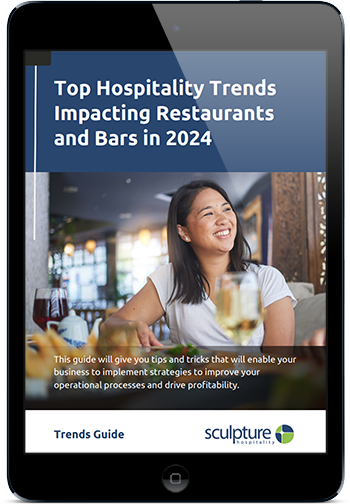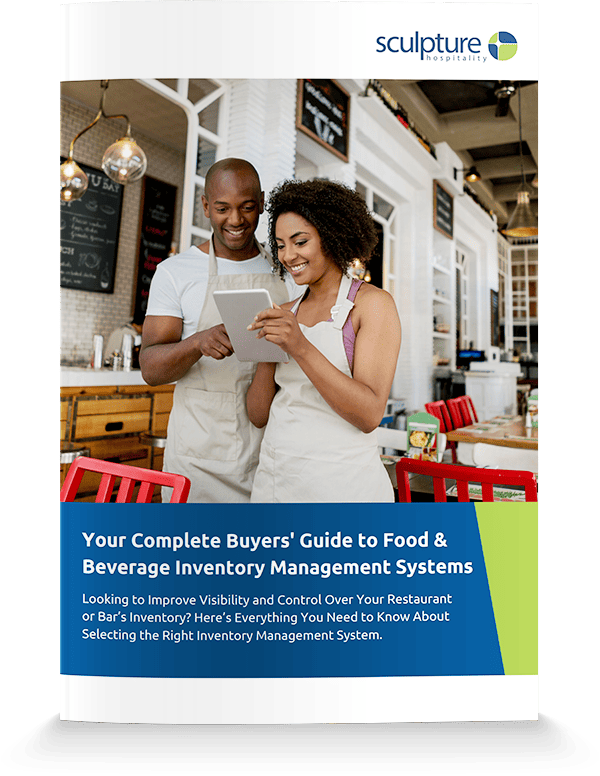The restaurant industry is fiercely competitive. As a restaurant owner, reducing your monthly expenditures and improving your bottom line is of paramount importance.
Yet most restaurants are struggling with this challenge. That’s because they don’t have the technologies and processes in place to give them clear insight into how much they are spending on key business processes, such as beverage and food inventory or labor. Without clear visibility into spend, your restaurant will suffer from hidden costs.
To improve profitability, your restaurant needs to address these hidden costs. Calculating, managing and controlling how much you spend each month will allow you to identify the areas of your business in which you are losing money, allowing you to take preventive measures that boost your profits.
With that in mind, Sculpture Hospitality has listed five important steps that will help your restaurant spend less and earn more.
#1 - Effectively manage your inventory to ensure food and beverage cost control
One of the biggest hidden expenses in the restaurant industry is poor management processes when it comes to food and beverage inventory. Hidden spend could be a result of anything within the inventory process, from poor ordering processes, unfollowed recipes, product spoilage, overpouring and much more.
To improve your inventory management processes and reduce hidden spend, it’s crucial that your business uses an inventory management system that has the unique functionalities that your restaurant requires to track and manage inventory. This will give you complete visibility into your inventory processes, and the ability to control spend before it becomes hidden. Reduced spend on inventory equals higher profits for your business.
#2 - Control labor costs by reducing staff turnover
Besides your restaurant’s inventory, there’s one other major spend that your restaurant has - labor cost. The hospitality industry has a notoriously high employee turnover rate, making labor cost a difficult process for your business to get under control. In fact, if your employee turnover rate is particularly high or you are using temporary workers without effective management processes, it’s likely that your business has no real visibility into labor spend.
Thankfully, there are some simple measures you can implement to reduce labor costs. One of the best measures is to create a better employee experience. This will result in your restaurant building a workforce that is highly-satisfied with their job and significantly more loyal to your company.
Want more tips on how to manage and reduce your labor costs without sacrificing highly-skilled workers? Check out our recent blog, Restaurant Management Tips: 5 Effective Ways to Reduce Labor Costs.
#3 - Improve ordering processes through insightful consumption-based analytics
Ordering too much product is a waste of money. In terms of food it will result in spoilage and lost revenue, while ordering other items that don’t go off such as beverages will just lead to your business tying up cash that it could have otherwise used to improve other aspects of your restaurant.
To make sure you aren’t over-ordering make sure that your restaurant is using historical consumption-based analytics to strategically guide what to order in the future. This can help your restaurant set your periodic automatic replenishment (PAR) level, for optimized inventory ordering.
#4 - Reducing waste by measuring variance
Using your point-of-sale system (POS) to manage your inventory spend is simply not effective. That’s because your POS is incredibly unlikely to be sophisticated enough to be able to measure variance. Without measuring variance, your restaurant will have no idea how much money your business is losing to easy mistakes such as overpouring, overserving or spoilage.
Use an inventory management system or application that gives you the ability to measure variance in your inventory. Measuring variance means measuring the actual amount of product you have used vs the amount of product you have sold. When you measure variance you’ll have clear visibility into where your business is wasting products, giving you the ability to implement new processes that prevent waste.
#5 - Automate manual processes where possible
Using manual technologies to run the back-end operational processes of your business can lead to two main challenges. Firstly, it’s time-consuming and requires labor-intensive tasks that result in hidden labor costs and perhaps overtime payments. Secondly, it leaves scope for human error and these mistakes can be hugely costly for your restaurant.
That's why, where possible, you should use technologies and tools that automate these manual processes. POS, inventory management systems, table reservation and accounting systems are all examples of tools that your restaurant can use to automate the back-end of your business and build seamless processes.
Looking for more advice on how to reduce spend in your restaurant and, as a result, improve profitability? Contact Sculpture Hospitality today. Our team of highly-skilled and locally-based hospitality professionals would love to answer any questions that you may have.








